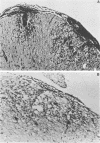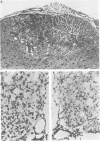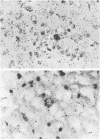Abstract
The appearance of histological lesions and the localization of viral RNA in the central nervous system of mice infected with tissue culture-adapted Theiler's murine encephalomyelitis virus (WW strain) (TMEV-WW) was studied. Viral RNA was detected by autoradiography after in situ hybridization, using a 3H-labeled DNA probe complementary to virion RNA, which was applied to deparaffinized sections of central nervous system tissues from infected mice. Subjacent histological sections of tissues were used to assess the location and extent of lesions. Lesions were first observed at 20 days post-inoculation and appeared to enlarge throughout infection. They consisted of infiltrates of mononuclear cells and lymphocytes in spinal cord white matter and leptomeninges; at 78 days post-inoculation severe necrotizing and demyelinative myelitis and gliosis were observed. In contrast to the pathogenesis of brain-derived TMEV-WW-infected mice, no lesions were found in the central nervous system gray matter of mice infected with tissue culture-adapted TMEV-WW at any time post-infection. Tissue culture-adapted viral RNA was found in the cells of spinal cord white matter throughout infection; only one neuron in close proximity to the injection site was found to contain viral RNA shortly after infection. At early times after infection, spinal cord white matter cells containing viral RNA were found before development of inflammatory lesions; at later days post-inoculation, positive cells were found within, at the periphery of, or at a distance from lesions. The number of infected cells and the amount of viral RNA per cell appeared to remain constant from 20 to 78 days post-inoculation despite the increasing intensity of the inflammatory response. The nearly exclusive spinal cord white matter tropism of tissue culture-adapted TMEV-WW appeared to directly correlate with the disease-inducing potential of this virus.
Full text
PDF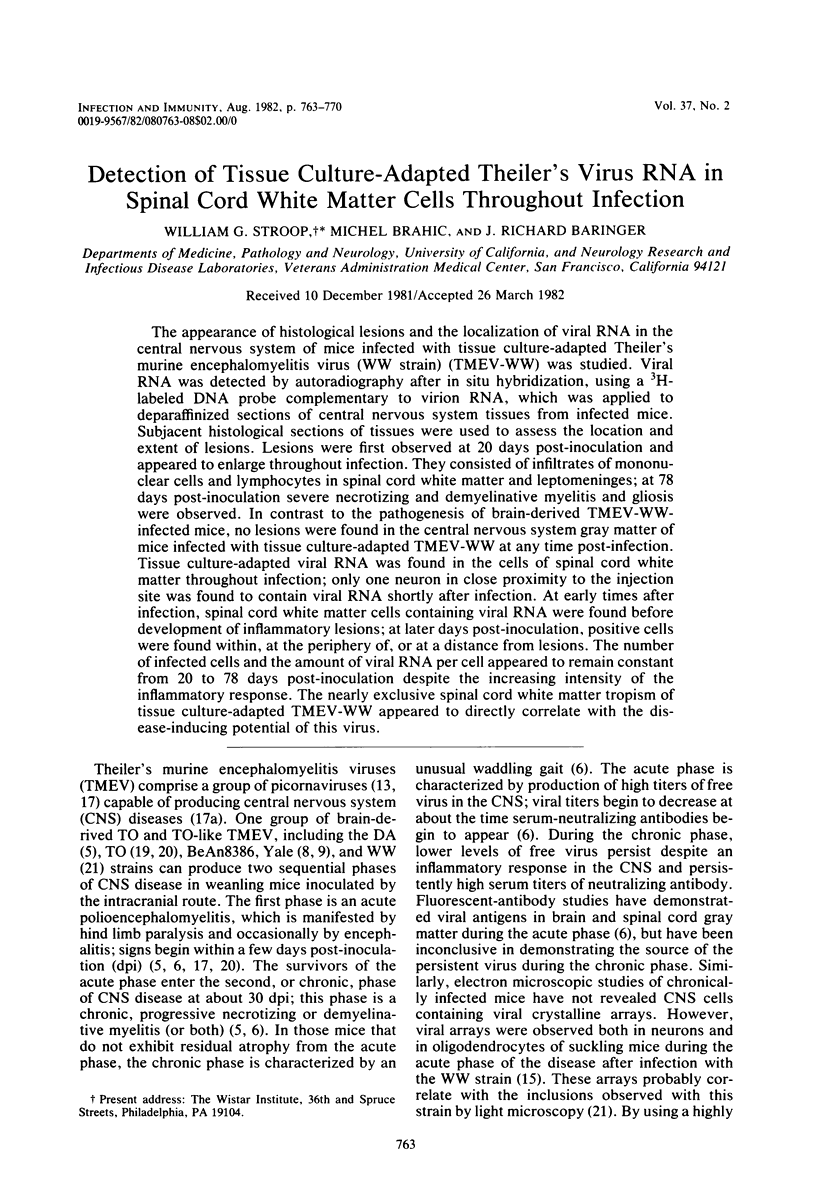
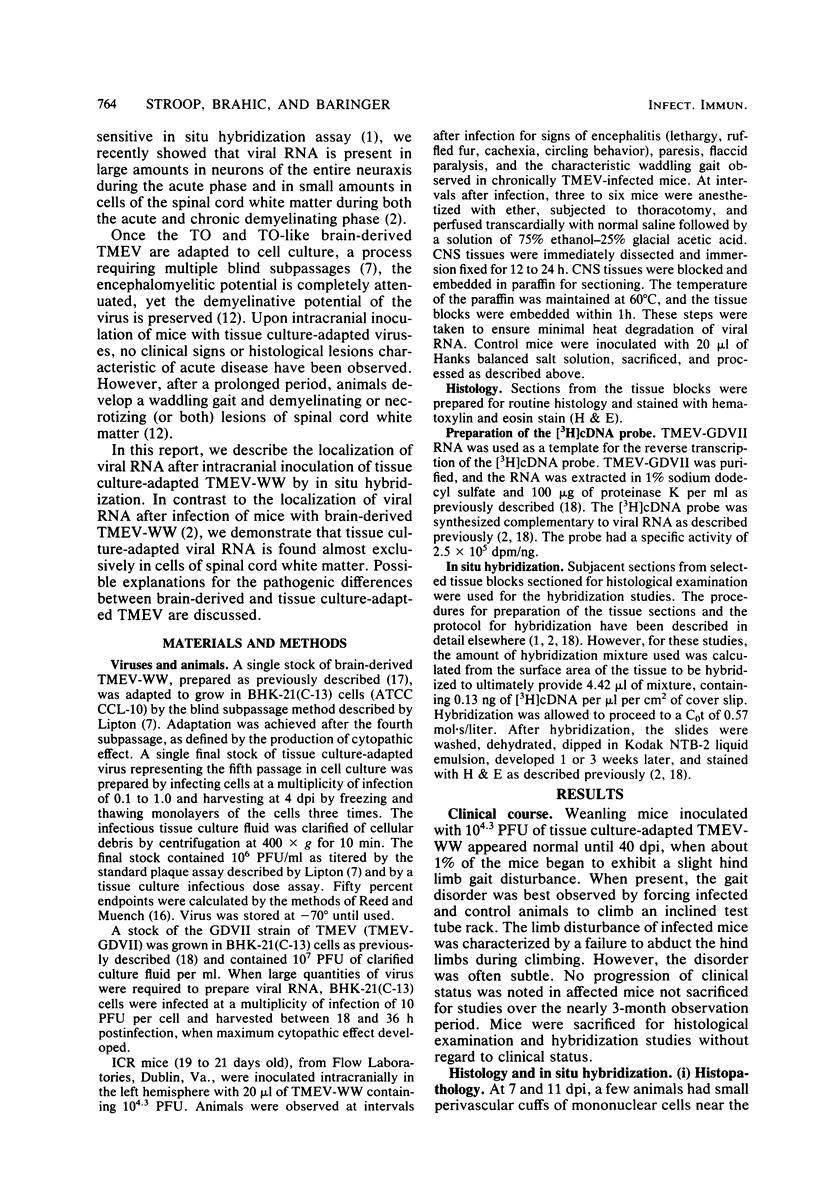
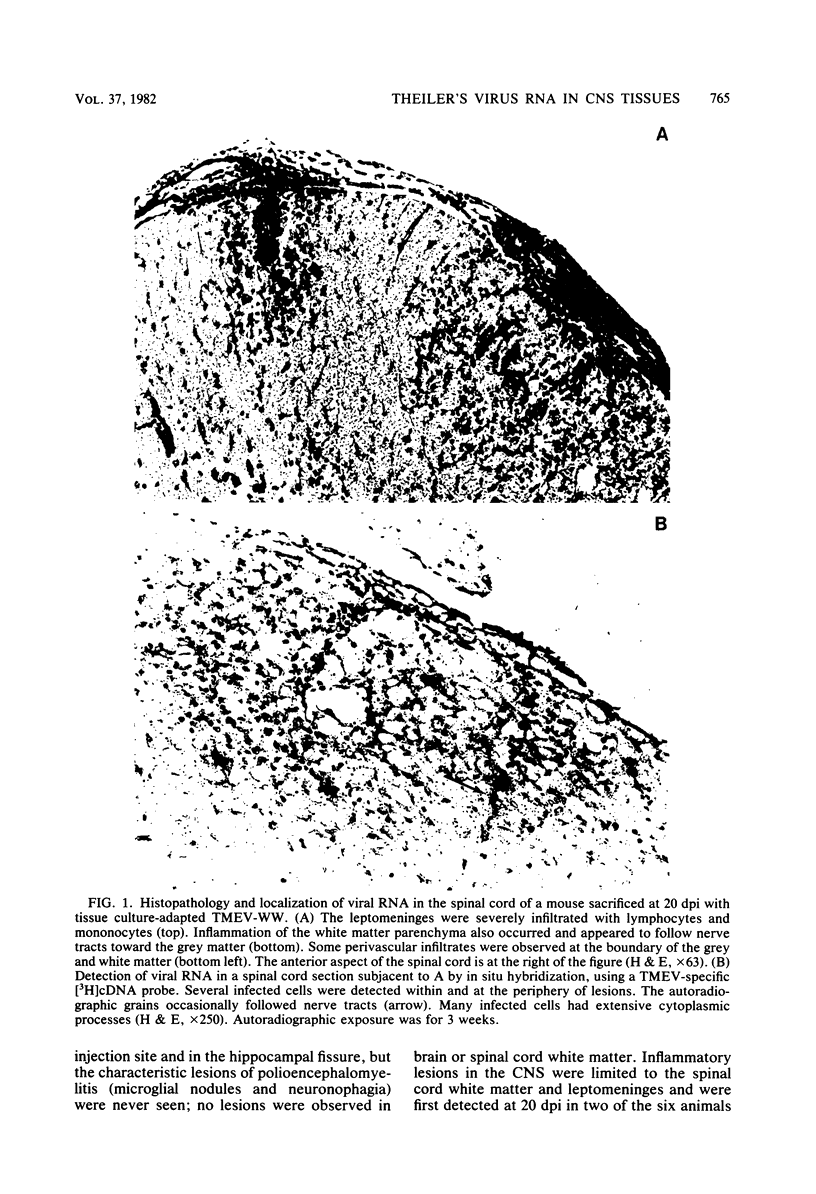
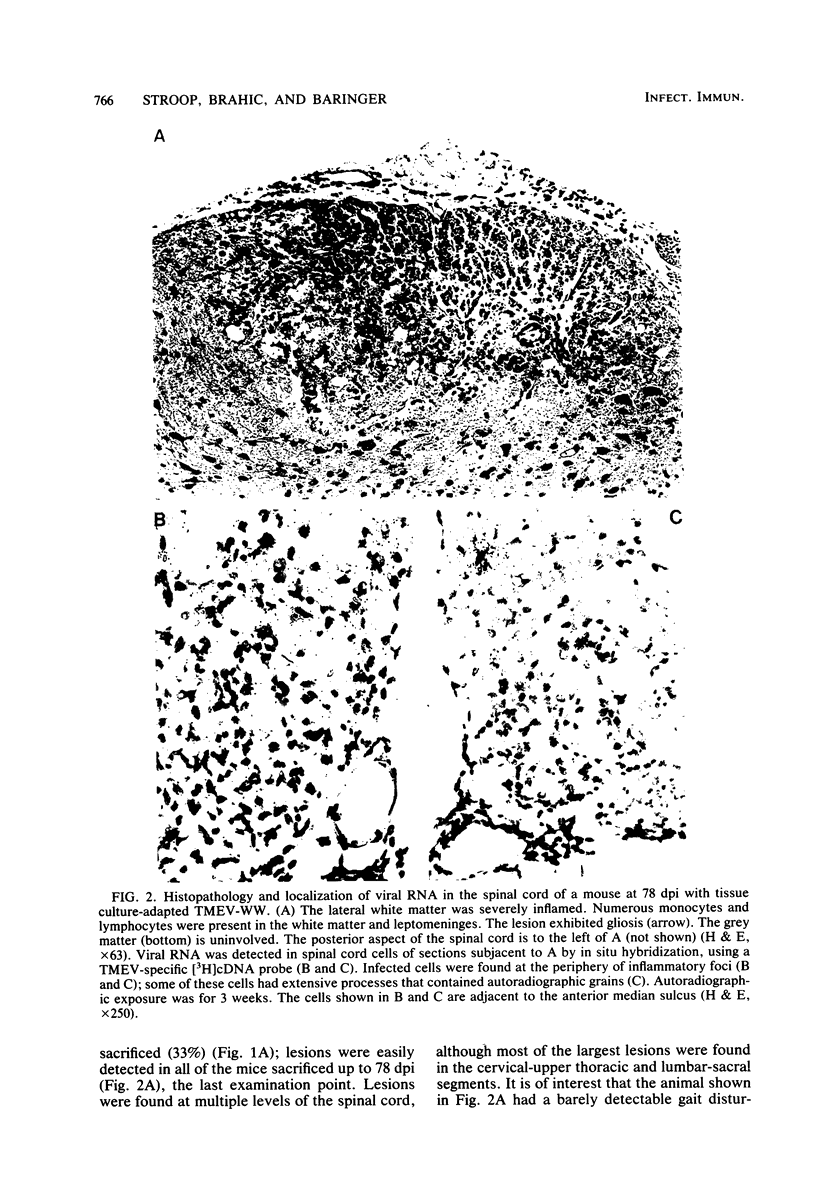
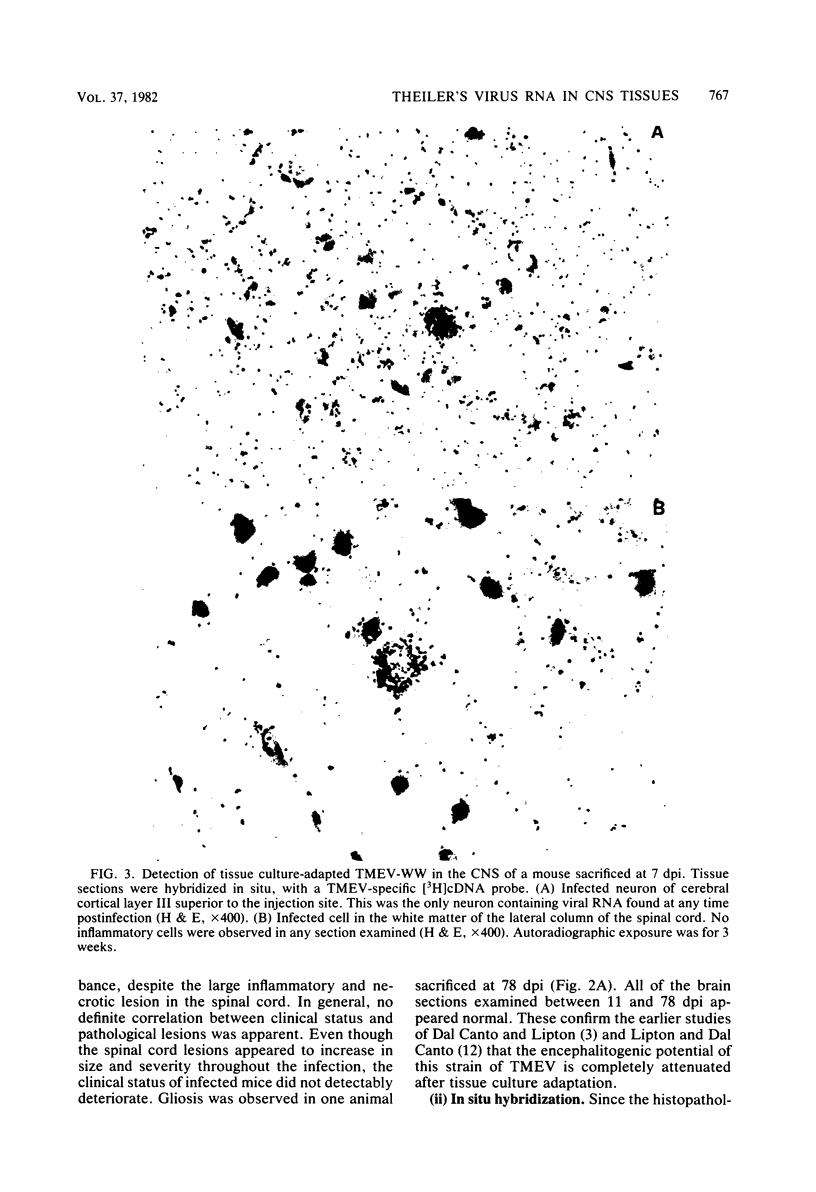
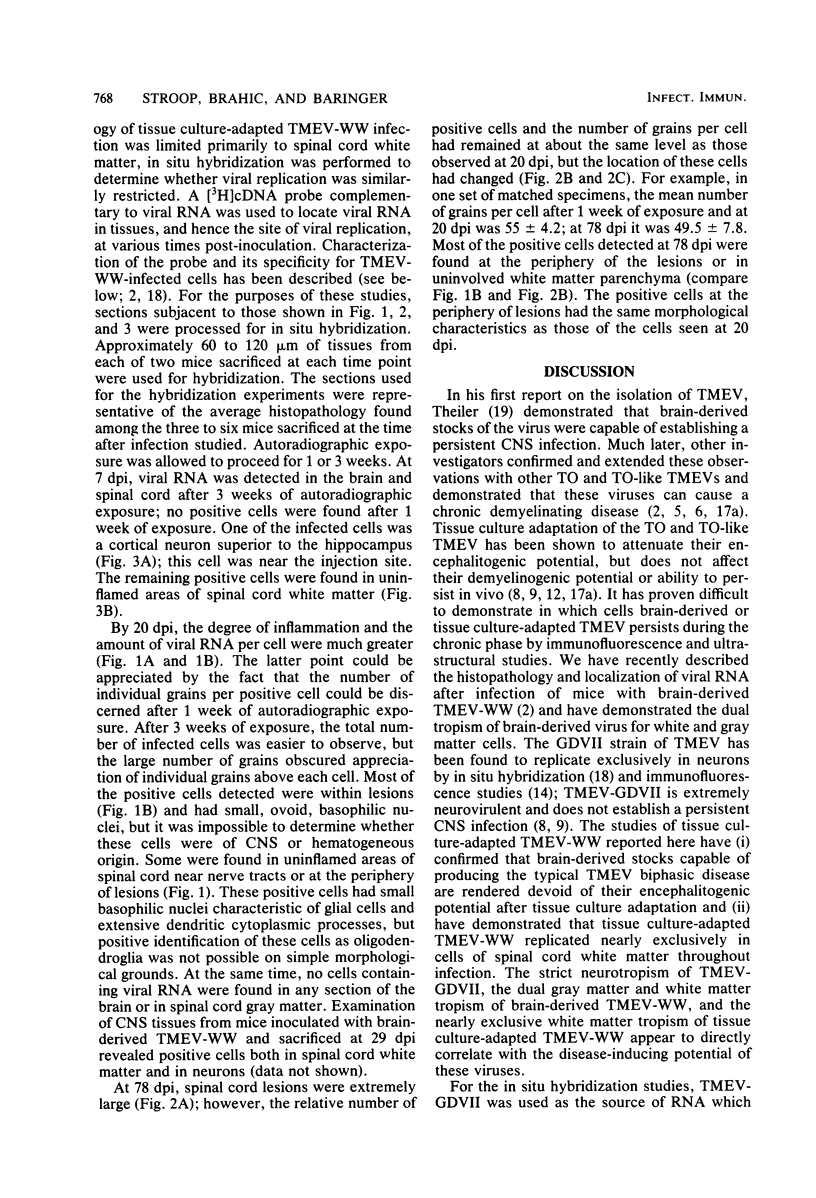
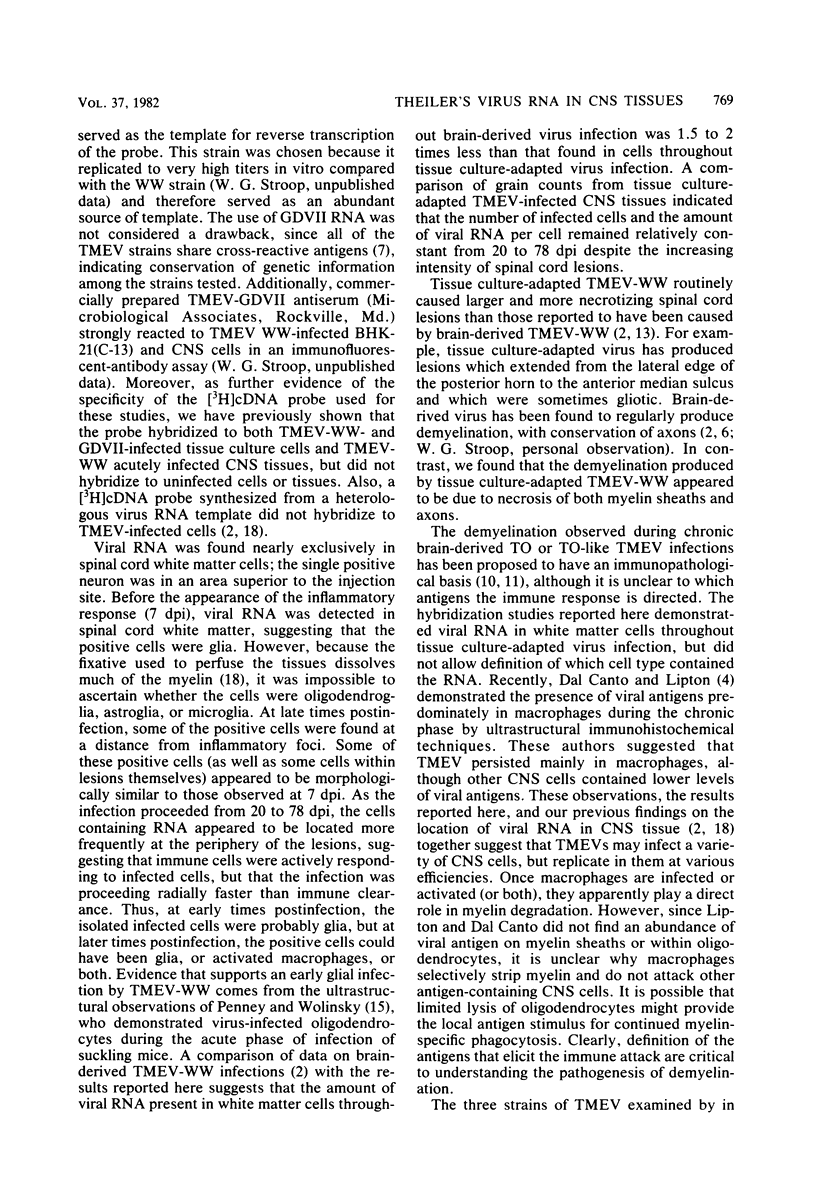
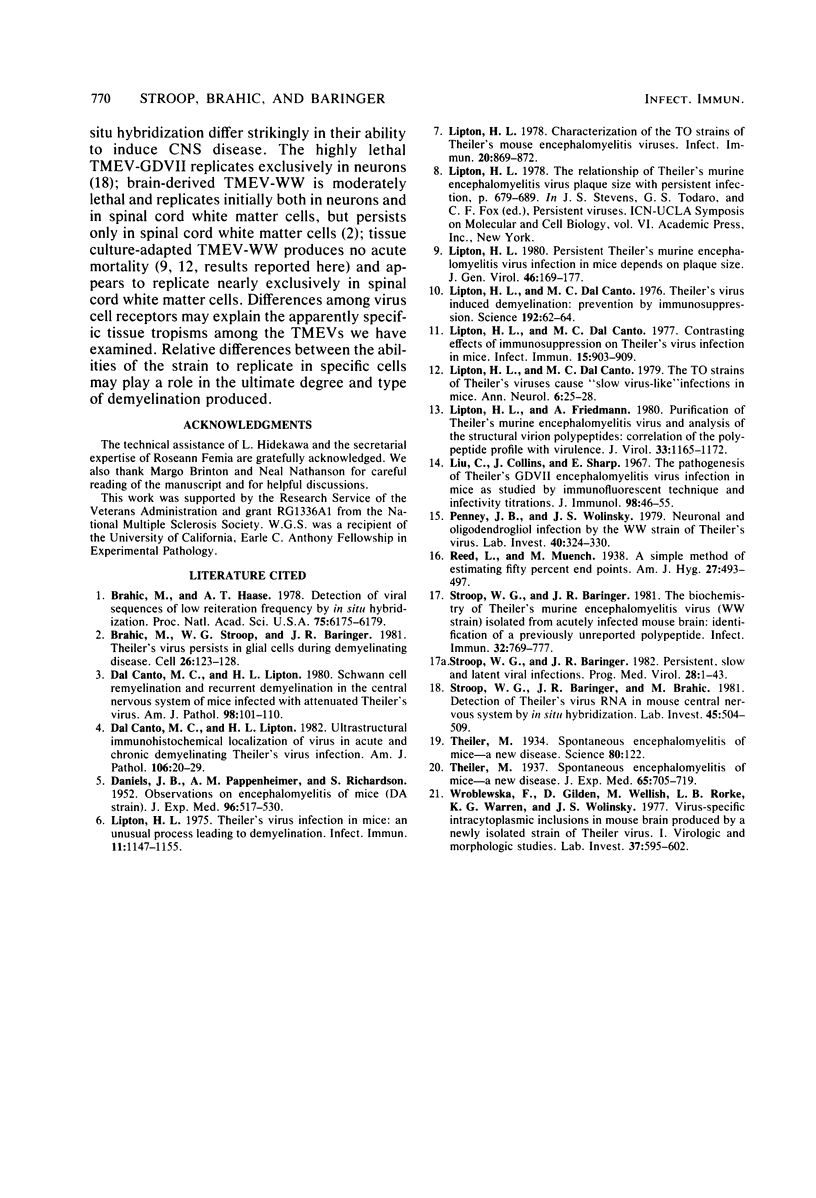
Images in this article
Selected References
These references are in PubMed. This may not be the complete list of references from this article.
- Brahic M., Stroop W. G., Baringer J. R. Theiler's virus persists in glial cells during demyelinating disease. Cell. 1981 Oct;26(1 Pt 1):123–128. doi: 10.1016/0092-8674(81)90040-4. [DOI] [PubMed] [Google Scholar]
- DANIELS J. B., PAPPENHEIMER A. M., RICHARDSON S. Observations on encephalomyelitis of mice (DA strain). J Exp Med. 1952 Dec;96(6):517–530. doi: 10.1084/jem.96.6.517. [DOI] [PMC free article] [PubMed] [Google Scholar]
- Dal Canto M. C., Lipton H. L. Schwann cell remyelination and recurrent demyelination in the central nervous system of mice infected with attenuated Theiler's virus. Am J Pathol. 1980 Jan;98(1):101–122. [PMC free article] [PubMed] [Google Scholar]
- Dal Canto M. C., Lipton H. L. Ultrastructural immunohistochemical localization of virus in acute and chronic demyelinating Theiler's virus infection. Am J Pathol. 1982 Jan;106(1):20–29. [PMC free article] [PubMed] [Google Scholar]
- Lipton H. L., Canto C. D. Contrasting effects of immunosuppression on Theiler's virus infection in mice. Infect Immun. 1977 Mar;15(3):903–909. doi: 10.1128/iai.15.3.903-909.1977. [DOI] [PMC free article] [PubMed] [Google Scholar]
- Lipton H. L. Characterization of the TO strains of Theiler's mouse encephalomyelitis viruses. Infect Immun. 1978 Jun;20(3):869–872. doi: 10.1128/iai.20.3.869-872.1978. [DOI] [PMC free article] [PubMed] [Google Scholar]
- Lipton H. L., Dal Canto M. C. The TO strains of Theiler's viruses cause "slow virus-like" infections in mice. Ann Neurol. 1979 Jul;6(1):25–28. doi: 10.1002/ana.410060106. [DOI] [PMC free article] [PubMed] [Google Scholar]
- Lipton H. L., Dal Canto M. C. Theiler's virus-induced demyelination: prevention by immunosuppression. Science. 1976 Apr 2;192(4234):62–64. doi: 10.1126/science.176726. [DOI] [PubMed] [Google Scholar]
- Lipton H. L., Friedmann A. Purification of Theiler's murine encephalomyelitis virus and analysis of the structural virion polypeptides: correlation of the polypeptide profile with virulence. J Virol. 1980 Mar;33(3):1165–1172. doi: 10.1128/jvi.33.3.1165-1172.1980. [DOI] [PMC free article] [PubMed] [Google Scholar]
- Lipton H. L. Persistent Theiler's murine encephalomyelitis virus infection in mice depends on plaque size. J Gen Virol. 1980 Jan;46(1):169–177. doi: 10.1099/0022-1317-46-1-169. [DOI] [PubMed] [Google Scholar]
- Lipton H. L. Theiler's virus infection in mice: an unusual biphasic disease process leading to demyelination. Infect Immun. 1975 May;11(5):1147–1155. doi: 10.1128/iai.11.5.1147-1155.1975. [DOI] [PMC free article] [PubMed] [Google Scholar]
- Liu C., Collins J., Sharp E. The pathogenesis of Theiler's GD VII encephalomyelitis virus infection in mice as studied by immunofluorescent technique and infectivity titrations. J Immunol. 1967 Jan;98(1):46–55. [PubMed] [Google Scholar]
- Penney J. B., Jr, Wolinsky J. S. Neuronal and oligodendroglial infection by the WW strain of Theiler's virus. Lab Invest. 1979 Mar;40(3):324–330. [PubMed] [Google Scholar]
- Stroop W. G., Baringer J. R. Biochemistry of Theiler's murine encephalomyelitis virus isolated from acutely infected mouse brain: identification of a previously unreported polypeptide. Infect Immun. 1981 May;32(2):769–777. doi: 10.1128/iai.32.2.769-777.1981. [DOI] [PMC free article] [PubMed] [Google Scholar]
- Stroop W. G., Baringer J. R., Brahic M. Detection of Theiler's virus RNA in mouse central nervous system by in situ hybridization. Lab Invest. 1981 Dec;45(6):504–509. [PubMed] [Google Scholar]
- Stroop W. G., Baringer J. R. Persistent, slow and latent viral infections. Prog Med Virol. 1982;28:1–43. [PubMed] [Google Scholar]
- Theiler M. SPONTANEOUS ENCEPHALOMYELITIS OF MICE--A NEW VIRUS DISEASE. Science. 1934 Aug 3;80(2066):122–122. doi: 10.1126/science.80.2066.122-a. [DOI] [PubMed] [Google Scholar]
- Wroblewska Z., Gilden D. H., Wellish M., Rorke L. B., Warren K. G., Wolinsky J. S. Virus-specific intracytoplasmic inclusions in mouse brain produced by a newly isolated strain of Theiler virus. I. Virologic and morphologic studies. Lab Invest. 1977 Dec;37(6):595–602. [PubMed] [Google Scholar]



